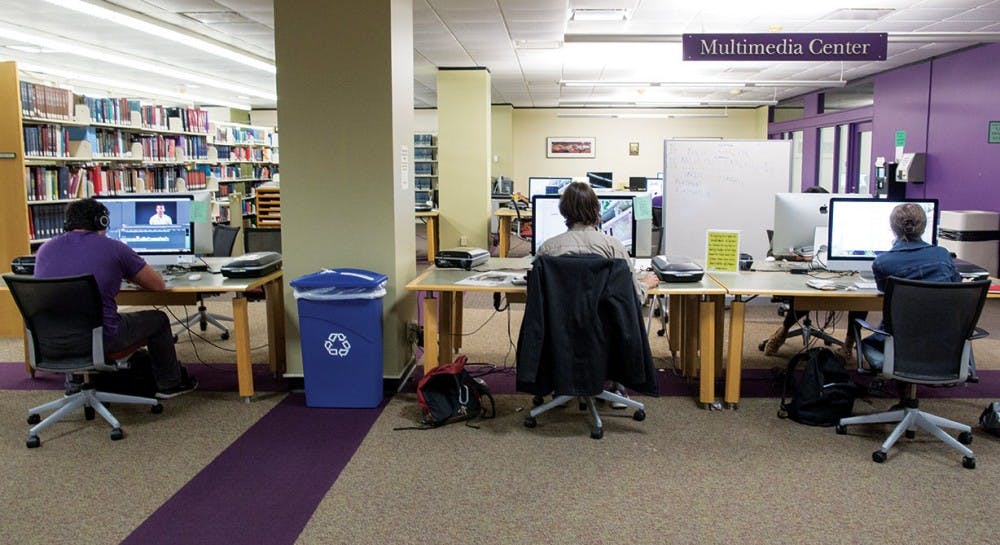Print circulation has declined at Alden, but more e-books are being checked out due to cultural shift.
In the last five years, the number of physical books checked out at Alden Library has dropped 33 percent. However, the loss is essentially made up with a 31 percent increase of e-books borrowed.
In 2011, about 116,000 e-books were checked out while almost 215,000 print books were borrowed the same year. In the 2014-15 school year, e-book checkouts rose to more than 152,000 while print dropped to about 144,000 checkouts, which shows how students have not stopped checking out books at Alden, but have shifted to a new medium of reading.
“I can’t say exactly why (print circulation has gone down) but I believe the availability and ease of use of e-books is certainly impacting,” Janet Hulm, the assistant dean for Collections & Digital Initiatives, said.
The rise of e-book checkout and the decline of print checkout demonstrates the change in culture and a difference between older and younger generations, Hulm added.
“I was in a library as a really young child so I always knew how to checkout a book, but there is a big difference between your high school library and your public library and your university library,” Hulm said. “I do think a lot of students are intimidated or can be intimidated by the size of a large research library like this, but I believe we have very friendly staff who would be more than happy to help students.”
Hulm said there are a lot of videos available on the website to show students how to locate and check out books.
“I think (Alden) is probably well organized but a little intimidating,” Natalie Hagans, a sophomore studying civil engineering, said.
Hagans said she has never checked out a book at Alden because she’s never needed one for research purposes and prefers to read books she owns for personal enjoyment.
“The important thing to know about e-books is that they are more readily available, they’re easier to get to,” Hulm said. “But if you are doing really intensive research and you need a universe of information on a smaller topic you are likely missing out on important resources if you limit to e-books only.”
Emma Toman, a freshman studying journalism, said she checked out a book she needed to use for a class project, but only checked it out because she “had to have a real book.”
{{tncms-asset app="editorial" id="6e1e7cda-e4a0-11e5-9667-d3bac870d8f2"}}
“It’s a lot easier to get books online now,” Toman said. “Even on (Alden’s) website, they have a lot of e-books that are easy to get.”
In terms of price, an e-book is generally, but not exponentially, more expensive than it’s counter print type for the library. However, when it comes to the cost of processing a print book, factors such as stamps and future repair along with shelf space has a large long-term cost, Hulm said.
Hulm said not everything published in print is published in an electronic form, and some publishers may not make all or some of their books available electronically for a couple years.
She added that sometimes, publishers won’t make its content available electronically at all, and when doing research, there is historical content in older books that is not available through the web.
“Students could be missing out on a lot of important information,” Hulm said.
@_alexdarus
ad019914@ohio.edu






